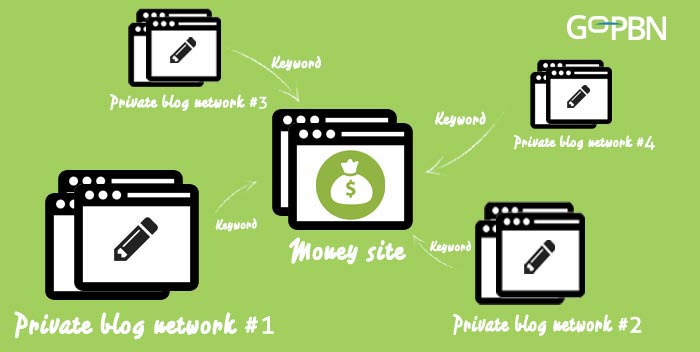All Categories
Featured
Table of Contents
- – What Is The Most Suitable Semantic Seo Strateg...
- – What Is The Most Trusted Semantic Seo For Begi...
- – What's The Leading Semantic Seo Vs Traditiona...
- – Who Has The Most Reliable Semantic Seo Techni...
- – The Leading Semantic Seo Guide To Get
- – What Is The Premier Semantic Markup In Seo C...
- – What Are The Top 10 Semantic Content Optimiz...
The web is transforming, becoming increasingly more semantic. Search engine optimization is also altering and ending up being a lot more semantic. This is due to the fact that search engines have actually advanced and are relocating a growing number of in the direction of reading web content on the internet. Certainly, that has likewise transformed the way we produce web content, particularly if we intend to rate far better in the search engines.
Intertwingularity is not generally acknowledged, people maintain pretending they can make points deeply ordered, categorizable and consecutive when they can not. Based on the partnerships in between search purposes, the search engine prefers a web content in placing by calculating the range between the vectors of definition.
It allows you to see, beginning from a topic, all the entities that are relevant to that subject. This means you can clearly see which entities/concepts/ideas have currently been covered on your web site, and you can find new possibilities by understanding what material you can include and how to develop it.
What Is The Most Suitable Semantic Seo Strategies Plan?
It is able to make your web content reasonable for online search engine on the one hand and for your target market on the various other. Structuring your web content model highlights your material and its underlying partnerships so that search engines can acknowledge you amongst numerous pieces of details, making you a lot more visible to users who fulfill the search intent associated to your company.
In semantic SEO copywriting, an editor begins with a more comprehensive variety of topics and tailors the content to consist of semantically relevant terms and phrases that help readers understand a subject, similar to checking out material in a wiki. From a material composing viewpoint, one useful way to do this is to create a vocabulary of terms and concerns bordering your target subject.
What Is The Most Trusted Semantic Seo For Beginners Right Now
Find out more regarding by seeing the by!.

Semantic search describes the procedure of exactly how search engines comprehend and match keywords to a searcher's intent in organic search outcomes. Before semantic search, search engines like Google ran like matchmakersaligning specific words in your query with those exact words on pages. The outcomes were uncomplicated but frequently did not have deepness.
What's The Leading Semantic Seo Vs Traditional Seo On The Market
It makes it possible for Google to use fast, exact response to search queries regarding real-world topics. When you type a question word right into Google, you're not simply getting in a series of words. You use an intricate web of meanings and links. Google's Understanding Graph sees these words as entities with context and relationships.
When you look for "Apple," Google does not simply see a word that explains a fruit. It identifies Apple as a business and can offer related details. It was Google's answer to the increase of voice searches, where queries ended up being a lot more conversational and nuanced.
Who Has The Most Reliable Semantic Seo Techniques?
By incorporating NLP, Hummingbird allowed Google to relocate beyond plain keyword matching. It helped the search engine comprehend search intent, raising the probabilities that results would properly match the factor behind a user's search. As the 3rd essential ranking element after material and web links, RankBrain has enhanced Google's semantic search capacities to recognize the meaning of search inquiries.
Making it extra reliable at taking care of never-before-seen search queries. RankBrain considers even more than simply search phrases when analyzing a search question.
So it fetches outcomes that match the search phrases and align with the overall intent of offering young puppy training advice. And if the individual often browses for dog-related web content, Google may focus on more comprehensive training guidesrecognizing the user's recurring interest in the subject. Incorporating innovations like the Expertise Chart, Hummingbird, and RankBrain, semantic search assists the Google algorithm interpret and link data across a huge web of info.
The Leading Semantic Seo Guide To Get
The focus shifts from keyword option to a holistic approach incorporating customer intent, topical relevance, and overall customer experience. Producing web content that deals with the searcher's requirements with thorough details can boost your SERP rankings.
A more comprehensive technique to material aligns much better with semantic search's change away from precise keyword matching and towards customer intent. Web content that covers search inquiries a lot more extensively not only pleases individuals.
UX aims to produce an aesthetically attractive, user-friendly interface with appealing, top quality web content that encourages visitors to stay. Semantic search modern technology allows search engines to aim for outcomes that offer the ideal possible UX.
What Is The Premier Semantic Markup In Seo Company?

All display Google's capability to resolve a subject question adequately. By recognizing the context and intent behind user inquiries, search engines can supply more appropriate information and potentially boost individual engagement. Customization in search results page produces much better UX.Based on your past search background and preferences as a user, semantic search assists online search engine customize the outcomes to fit your unique needs and passions.
It brings results that match the keyword phrases and straighten with the general intent of offering pup training suggestions. And if the individual regularly browses for dog-related content, Google may prioritize much more detailed training guidesrecognizing the user's ongoing passion in the subject. Incorporating innovations like the Understanding Graph, Hummingbird, and RankBrain, semantic search helps the Google algorithm analyze and link information throughout a large internet of info.
What Are The Top 10 Semantic Content Optimization?
The focus changes from keyword option to an all natural technique incorporating customer intent, topical significance, and total user experience. Developing content that addresses the searcher's needs with detailed details can improve your SERP rankings.

And sort of material can best satisfy their needs. A broader method to material aligns much better with semantic search's shift away from exact key phrase matching and toward individual intent. Which discusses the enhanced concentrate on topic clusters, instead of specific keyword phrases. Material that covers search inquiries better not just pleases users.
And 5 times greater than websites that take 10 secs to tons. While technical search engine optimization makes certain ideal site performance and access, concentrating on customer experience (UX) takes it an action additionally. UX aims to produce a visually attractive, straightforward user interface with engaging, quality material that urges site visitors to remain. Semantic search modern technology makes it possible for search engines to go for results that give the most effective possible UX.
All display Google's capability to address a topic question thoroughly. By comprehending the context and intent behind customer questions, search engines can supply more relevant information and potentially raise customer involvement. Personalization in search engine result makes for better UX.Based on your previous search background and choices as a user, semantic search aids online search engine customize the outcomes to match your one-of-a-kind needs and passions.
Table of Contents
- – What Is The Most Suitable Semantic Seo Strateg...
- – What Is The Most Trusted Semantic Seo For Begi...
- – What's The Leading Semantic Seo Vs Traditiona...
- – Who Has The Most Reliable Semantic Seo Techni...
- – The Leading Semantic Seo Guide To Get
- – What Is The Premier Semantic Markup In Seo C...
- – What Are The Top 10 Semantic Content Optimiz...
Latest Posts
Top-Rated Semantic Markup In Seo To Buy
What Are The Leading Seo For Semantic Search Brands To Buy
Who Makes The Top Semantic Seo Framework
More
Latest Posts
Top-Rated Semantic Markup In Seo To Buy
What Are The Leading Seo For Semantic Search Brands To Buy
Who Makes The Top Semantic Seo Framework